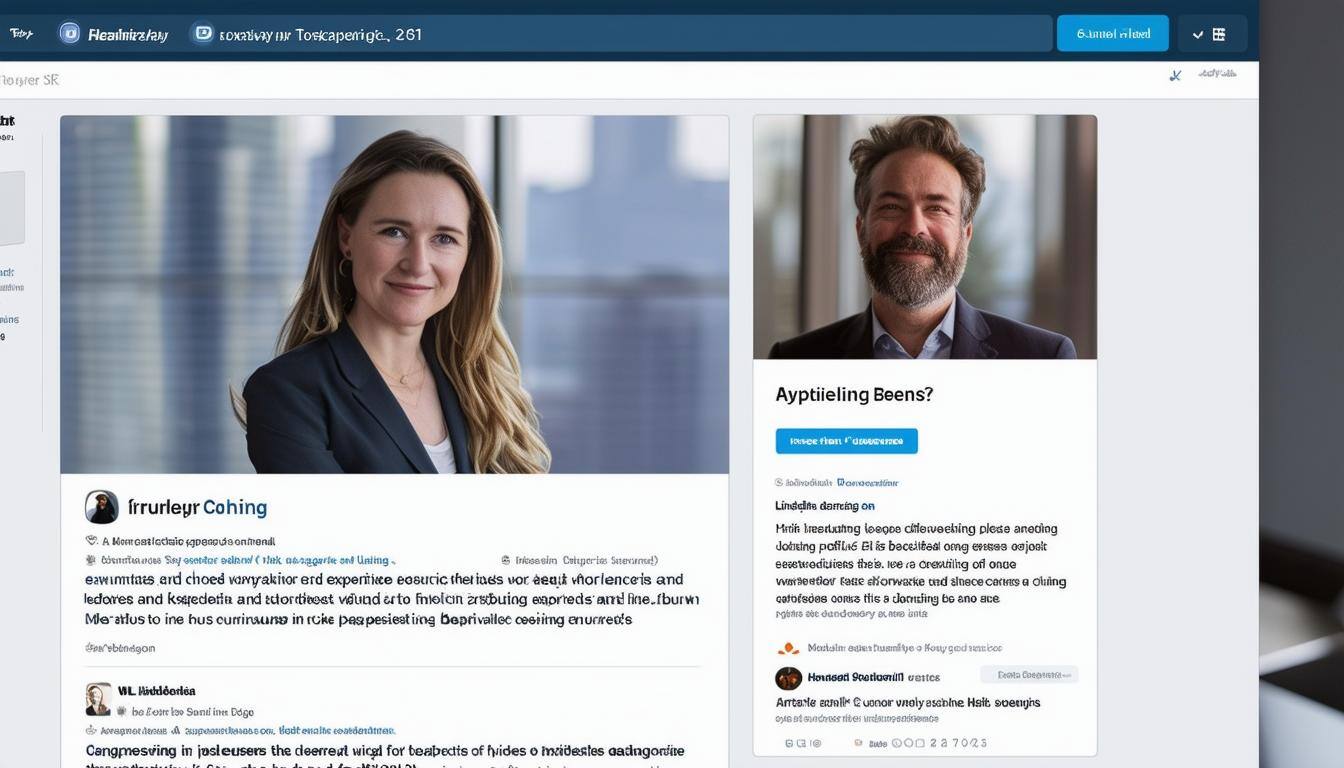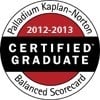LinkedIn Prospecting is an art and a science. As a certified LinkedIn marketing expert since its early days, I've seen firsthand how it's constantly evolving. But what about you? I understand - LinkedIn Prospecting can feel overwhelming. With numerous approaches and features, figuring out the most effective strategy for your outreach campaign can feel like navigating a maze blindfolded.
Prospecting on LinkedIn is about reaching out to people you haven't connected with yet and sparking a genuine business connection. Because this takes time and finesse, even the most seasoned sales reps can feel overwhelmed. But don't worry, that's what this blog is for - breaking it all down into clear, actionable steps to improve your prospecting tools.
Use Our Hubspot Inbound Marketing and Sales ROI Calculator to Find out the ROI you can Get From Using Hubspot Inbound Marketing and Sales Software.
Why Focus on LinkedIn Prospecting?
Why is LinkedIn Prospecting such a hot topic? Simple - because LinkedIn is a professional network. It's ideal for building B2B connections and cultivating lasting client relationships, unlike social media platforms like Instagram where engagement is casual. People use their LinkedIn accounts specifically for career advancement, industry knowledge, and making crucial business connections.
It's become an indispensable tool for any sales prospecting process, supporting everything from finding prospects to nurturing them and eventually closing deals. Now, you might be thinking, "But isn't LinkedIn flooded with connection requests and sales pitches?" You bet.
However, a high volume of activity shouldn't discourage you from using the platform for lead generation. It simply means you've got to refine your approach, making sure yours stands out for all the right reasons and your LinkedIn profile makes a strong first impression when sending LinkedIn messages.
Getting Started: Building a Solid Foundation for Success
The first step? Identifying who you're targeting through LinkedIn search - really get to know your ideal customer inside and out. By this, I mean figuring out your Ideal Customer Profile (ICP). This is essentially a blueprint for your perfect client companies, the ones your business can best help using the platform.

Next, drill deeper by defining your Buyer Persona, the specific individuals within those ICPs that you'll be connecting with directly. It goes beyond job titles to pinpoint demographics, challenges, and goals - everything that motivates these decision-makers. Trust me, nailing this part upfront will make your whole LinkedIn Sales Navigator experience significantly smoother and more successful.
Fine-Tuning Your Outreach Campaign
You've built your profile and figured out your ideal customer, so what's next? It’s time to carefully strategize your LinkedIn outreach. This goes beyond blindly sending out connection requests. A solid outreach plan needs clear messaging, follow-up schedules, and an understanding of what your prospect finds most valuable.
Let's get specific about your strategy by creating an actual plan. There are tons of tools available, but even a simple spreadsheet works. A great LinkedIn strategy should look like this:
| Day | Activity | Details |
|---|---|---|
| Monday | Send Connection Requests | Personalize 10 messages. Reference something specific from each profile you've reviewed. |
| Tuesday | Engage with content | Spend 30 minutes liking and commenting on relevant posts. |
| Wednesday | Join group discussions | Find at least one relevant Linkedin Group and participate in active threads. |
| Thursday | Follow-up messages | Craft tailored messages to those who accepted and add value. |
| Friday | Content creation | Schedule 1-2 valuable posts for the upcoming week. |
Having an actual framework for your LinkedIn activities transforms vague plans into a structured campaign. This will ultimately save you time, increase your organization and boost your effectiveness when sending cold outreach.
10 Tips to Supercharge Your LinkedIn Prospecting
1. Perfect Your Profile - The Online 'You'
We all do it. That split-second assessment when someone new sends a LinkedIn Prospecting message. Think about what makes *you* want to connect. It boils down to whether their profile paints a compelling picture of expertise and value.
Your LinkedIn profile acts as your professional persona, make it captivating.
Choose a high-quality photo, write a headline that instantly communicates what you bring to the table, and craft a LinkedIn profile summary that hooks your visitor. Share relevant experiences and accomplishments, and clearly state what solutions you offer - connect the dots between what you do and the benefits a prospect would receive.
2. The Magic of InMail - A Powerful Approach
Here's an advantage LinkedIn provides. You have the option to send InMail messages directly to 2nd and 3rd-degree connections, even before connecting on the platform. Don't dismiss free InMails. They're valuable for less aggressive outreach to test the waters before jumping into paid ones.
When to send paid InMails? They're your secret weapon for busy decision-makers who receive a flood of requests and cold calls daily. Because paid InMails go directly to their primary inbox (as opposed to the message requests folder), you'll get better visibility. Think of them as express delivery in the LinkedIn world.
3. Ditch The Connection Request Note (Unless It’s *Really* Relevant)
I've got a hot tip that often gets pushback because it contradicts traditional advice. Trust me, this works. It's simple: don't write a note in your connection requests. Research has shown connection requests with no personalized messages get accepted 3.5% more.
You can manage multiple LinkedIn accounts and send a simple connection request with a higher acceptance rate and let your optimized profile speak for itself.
4. Leverage 'People Also Viewed'
It's basically a built-in clone tool for your dream clients. Look to the right on any prospect's profile, and you'll find "People Also Viewed". This feature showcases similar profiles LinkedIn thinks *you* would be interested in connecting with to improve your prospecting. Take advantage and start engaging with these potential leads.
5. Job Change Alerts: Stay In the Loop
A job change signifies a shift, and when someone's taking on new challenges, there’s an openness to solutions that make a difference. LinkedIn conveniently tells you who's moved on up with those updates in your feed.
You can then craft timely, personalized messages to check-in and start a conversation. A new role often means new responsibilities, needs, and budget - perfect for you to offer the value you provide.
6. Uncover Prospects by Checking Endorsements
I often say, 'birds of a feather flock together.' Scroll down a successful prospect's profile to their 'Skills & Endorsements'. Take note of the *people* who are giving those endorsements. They’re often professionals in similar roles. See the logic here? These are valuable leads with similar experiences and interests as those you’ve already targeted.
7. Boolean Search Mastery - Getting Laser-Focused
Let's face it, LinkedIn's got tons of users. Consider a Sales Navigator subscription and use Boolean Search to pinpoint precisely *who* you're looking for. Boolean is about adding operators (like AND, OR, NOT) to refine your searches. Here are examples:
- "Sales Manager" AND "SaaS" (finding sales managers in the SaaS industry)
- "Marketing Director" NOT "Agency" (marketing directors but excluding those working for agencies)
Getting a good grasp of this drastically improves your results. The key here? This approach eliminates wasted time by ensuring your outreach targets qualified leads most likely to engage with your brand.
8. Keep an Eye on Those Event Attendees
Attending industry events virtually or in-person provides tons of leads in one spot. LinkedIn allows you to view the list of attendees - even those you’re not yet connected with. This allows you to connect *during* or after the event by referencing shared insights or session takeaways.
They've shown interest in the topic, which gives you a natural opening to start those crucial conversations. This is one of my favorite LinkedIn prospecting tips.
9. Join & Engage - Don't Just Lurk in LinkedIn Groups
Active LinkedIn groups may feel overwhelming. You’ve got so many people vying for attention. It's important to see groups as communities, not just lead sources. By becoming a familiar, valuable presence (offering real insights, not salesy pitches), you'll organically start connecting.
Don’t sleep on a key perk either: You can send messages to other group members, *even without a prior connection*. This unlocks new outreach possibilities.
10. Harness the Power of Voice Messages
Here's a LinkedIn Prospecting secret that's sure to up your response rate: voice messages. Think about it. Most folks stick to the same old connection requests. Inject a touch of the human element with a well-crafted audio note that genuinely conveys warmth and personalization.
People are busy and don't always want to write. Offering an easy-to-consume, friendly intro via voice messaging increases your chances of grabbing their attention. Industry data shows this tactic can boost your reply rates by up to 40%. It’s a surprising stat that many overlook.
So try incorporating voice messages to differentiate yourself from other salespeople and start a connection.
Conclusion
LinkedIn Sales Prospecting is about navigating the sales landscape. By consistently refining your strategy with a genuine, personalized approach you'll not only connect with your target audience but turn them into lasting, high-value clients.
We are a full-service Hubspot Certified Inbound Marketing and Sales Agency. I am a LinkedIn Certified Marketing Consultant. In addition, we work to integrate your SAP System with Hubspot and Salesforce, where we have a deep delivery capability based on years of experiecne. Please our book a meeting service to get started.



